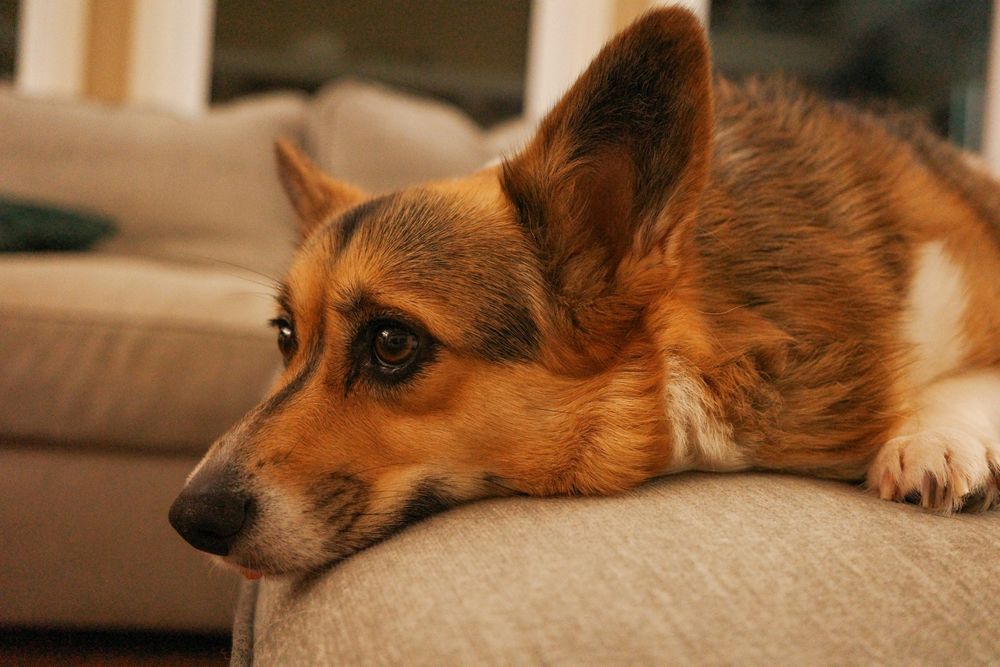
Helping Your Pup Overcome Separation Anxiety: Practical Strategies That Work
Separation anxiety in dogs is a serious behavioral issue affecting many pet owners. It causes distress for dogs when left alone and can result in destructive behaviors like chewing, excessive barking, or attempts to escape. Our Shiba Inu experienced severe separation anxiety when we first got him — so intense that he bit his crate bars until the welds broke. This blog outlines practical steps to help dogs with separation anxiety while providing empathy to owners facing this challenge.
Understanding Separation Anxiety in Dogs
Separation anxiety occurs when a dog feels extreme stress or panic from being separated from their owner. Common symptoms include destruction of property, excessive vocalization, attempts to escape confined areas, drooling, pacing, and restlessness. These behaviors are signs of emotional distress rather than disobedience.
In dogs, separation anxiety often stems from insecure attachment or fear of abandonment. Dogs have evolved as social animals with strong pack instincts, so separation creates a sense of vulnerability. This can be especially pronounced in breeds like Shiba Inu, known for both independence and strong bonds with their owners.
Our Shiba Inu’s Initial Experience with Separation Anxiety
When our Shiba Inu arrived home as a puppy, we quickly realized his anxiety was more than typical adjustment behavior. He chewed aggressively on his crate, eventually breaking some welds through continuous biting. This physical damage was a direct expression of his panic and attempts to escape.
When we first left him alone, we often faced 20 or more minutes of intense crying and barking. It was emotionally challenging to hear, but we understood it was his way of expressing fear. Over time, with repeated practice and gradual increase of alone time, the intensity and duration of his distress decreased significantly.
This behavior showcased two key aspects of separation anxiety: intense distress when left alone and the urge to escape from confined spaces associated with being left. Recognizing these signs helped us shift from frustration to addressing his emotional needs with targeted interventions.
What to Expect When Managing Separation Anxiety
It’s important for owners to prepare for an often gradual, slow process. Here’s what to expect:
- Initial Intense Reactions: Like with our Shiba Inu, expect loud crying, barking, or destructive behavior in early stages.
- Slow Progress: Reducing anxiety won’t happen overnight. Progress may feel slow and uneven.
- Setbacks: There may be days when your dog regresses, especially if routines are disrupted.
- Incremental Improvement: With consistent effort, the duration and intensity of anxious behaviors typically decrease.
- Emotional Ups and Downs: Owners may feel frustration or helplessness but maintaining patience is key.
Effective Strategies to Help Dogs with Separation Anxiety
Addressing separation anxiety requires consistent, patient effort. Here are the practical steps that helped our Shiba Inu manage his anxiety over time:
Gradual Alone-Time Training
Start by leaving the dog alone for very short periods—seconds or a few minutes—and gradually increase the duration. This step-by-step desensitization helps break the association between absence and panic.
Creating Positive Associations with the Crate
Use treats and toys that the dog only gets during crate time. Puzzle toys filled with safe treats or frozen peanut butter on a Kong can make the crate a rewarding place rather than a stressful confinement.
Physical Exercise and Mental Stimulation
Provide ample physical exercise and mental engagement before alone time. A tired dog is less likely to feel anxious. Daily walks, play sessions, and interactive toys help expend energy and calm the brain.
Consistent Exit and Return Routines
Establish predictable routines during departures and arrivals to reduce uncertainty. Avoid emotional goodbyes or excited greetings, which can increase anxiety.
Making the Crate Comfortable
Equip the crate with soft bedding and maintain a calm environment. Ensure good ventilation and a quiet location separate from loud household activity.
Professional Help and Calming Products
When anxiety is severe, seek advice from a professional trainer or veterinarian. Some may recommend behavioral therapy or calming supplements to support recovery.
Addressing Owner Stress and Building Empathy
Owners of dogs with separation anxiety often experience frustration, guilt, and helplessness. This emotional burden is normal but can be mitigated by understanding separation anxiety is a diagnosable condition, not a failure in training or discipline.
Patience — for both the dog and the owner — are key to progress. The journey involves setbacks but consistent, compassionate care leads to improvement.
Why Some Dogs Are More Prone to Separation Anxiety
Several factors contribute to separation anxiety risk: genetics, early experiences, breed traits, and environmental changes. Rescue dogs or those exposed to trauma are particularly vulnerable. Shiba Inus, known for their strong bonds and territorial nature, may display anxiety in response to separation if not properly socialized and trained.
Tailoring Solutions to Your Dog’s Needs
Not all dogs respond equally to crate training or behavior modification. Observe your dog’s reactions and remain flexible. Some dogs benefit from free-roam safe spaces, while others thrive in crates. Adjust strategies based on progress, and always prioritize the dog’s emotional safety.
Separation anxiety is a challenging but manageable condition. Our Shiba Inu’s experience illustrates that with targeted strategies — gradual training, positive reinforcement, exercise, routines, and professional help—dogs can learn to feel secure alone. Owners should approach this issue with patience and compassion, knowing that improvement is possible with time.